No products in the cart.
An Easy Guide To Understanding How Medical Equipment Is Made
When it comes to the medical field, there are many different pieces of equipment that are used in order to carry out necessary procedures. Against this backdrop, it is certainly understandable how important all of the equipment that you use is at your job. Fortunately for you, modern technology has made incredible strides with regards to everything related to medicine; as such, there are countless high-quality products on the market right now which can make your day-to-day efforts significantly easier. The goal of this article is to help you better understand how different medical equipment is produced and what its respective components may be composed of. In doing so, we hope that it will prove useful for individuals who need a quick refresher course before purchasing their next piece of equipment for work!
Medical Equipment
Medical equipment is used every day, by every person. Whether it be simply a stethoscope around the neck of a doctor or an MRI machine at a hospital, medical equipment gets the job done. There are many different parts to each piece of medical equipment that help keep patients safe and allow doctors to properly diagnose them. These pieces are made in various ways depending on what they are supposed to do and which part of the anatomy they’ll affect. The most common types of materials that make up medical equipment include plastics, metals, glasses, ceramics, rubber, and silicone. Each material has its own unique properties- some more suitable than others for certain tasks within the body- but all have their own when making an array of products.
Everything from intrinsically safe heaters for various materials, to temporary joint replacements made of a variety of materials is used every day. Not only do these materials provide efficient and safe solutions for doctors, but they also contribute to the overall safety and well-being of patients.
Plastics are used in many medical devices today because they are abundant, cheap to make, and lightweight. They do not corrode or conduct electricity, which makes them ideal for equipment that is placed inside of the body or an electrical device. For example, PVC tubing is usually used when connecting the machine to the patient’s body due to its flexible nature and ability to withstand high temperatures without cracking. It also doesn’t react with any chemicals it comes into contact with, making it safe for use inside of a patient’s bloodstream or lungs. While plastics are inexpensive and long-lasting, they can be potentially hazardous during their process of manufacture due to the toxicity levels of certain compounds within them.
Medical Die Cutting
One of the earliest methods of making tools for medical use was by hand. In order to do so, a blacksmith would need to heat up a piece of metal in a forge before shaping it on an anvil. However, once materials such as steel and iron were discovered in the advent of the Industrial Revolution, machines began playing a significant role in helping craftsmen create all sorts of new products quickly and in larger numbers.
For example, die-cutting is used to cut out shapes from sheets or blocks of material using sharp tools called dies. The punch creates pressure between different plates to achieve the desired object- whether it be the edge pattern on surgical gloves or custom-sized trays needed for specific purposes. Die-cutting is one of the most innovative cutting methods for medical products and can be done either by hand or with the help of a machine. It is an important process in manufacturing, as it makes it possible to create more intricate designs faster and at lower costs.
Metal Stamping
Another way that medical tools are mass-produced is through metal stamping. This involves taking a thin sheet of metal, placing it into a press, and putting pressure on either end until the desired object is created. Though this method typically creates less detailed results than die-cutting, it is a bit faster. Depending on the size of the product being made, these machines can operate up to 1000 times per minute! The products most commonly stamped include handles for surgical instruments, clamps used to hold equipment in place during surgery, and trays needed by radiologists.
Metal Casting
Though die-cutting and metal stamping are used to create products quickly, metal casting is another method that enables manufacturers to produce more intricate pieces at a lower cost. A variation of this process can be found in the creation of hip replacements. After being fitted by an orthopedist, these implants are fired at extremely high temperatures until they are completely molded before being cooled. This makes them dense- giving them their characteristic appearance- but also incredibly expensive due to the amount of time required to produce one individual implant. Surgeons prefer them to be made out of titanium because the metal is strong, lightweight, and highly resistant to corrosion. Yet with an array of products, there isn’t always one material that works best for every task. For example, surgical tubing can be made from silicone or PVC. Silicone is often used when the material needs to stand up against heat (such as inside a patient’s body), but it can break down easily due to its low melting point. On the other hand, PVC tubing is usually used for connecting equipment that creates heat (such as sterilizers) to objects that will come into contact with blood or bodily fluids. This prevents materials within the kit from reacting with each other.
To conclude, the use of plastics, metals and other materials to create medical equipment is integral in improving the lives of patients everywhere. Although this process has its risks- such as transferring hazardous chemicals into the patient’s body- these devices allow us to see inside our own physiology at a level never before possible. By understanding how these tools are created, we can ensure that they are safe for everyone who uses them!






